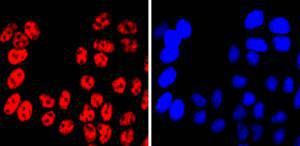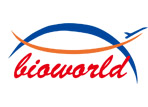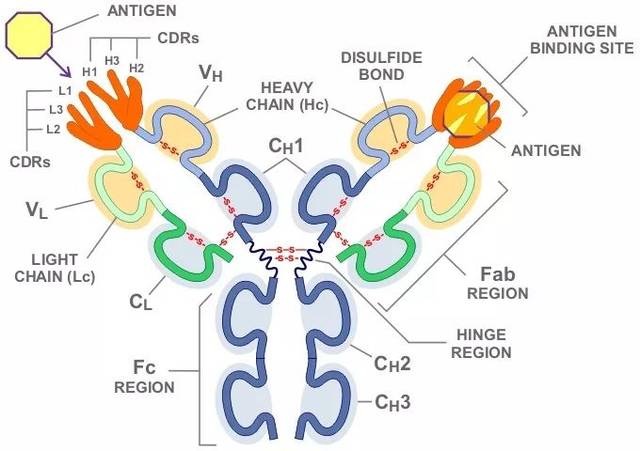Product Name :
MiTF polyclonal antibody Background :
MITF (microphthalmia-associated transcription factor) is a melanocytic nuclear protein that contains basic helix-loop-helix (HLH) and leucine zipper (LZ) domains. These protein motifs are frequently observed in other transcription factors and are particularly common to members of the Myc family. MITF can directly associate with DNA as a homodimer and is required for the development and differentiation of melanocytes. Its expression is upregulated by cAMP and cAMP-dependent pathways. MITF activates several different gene promoters by binding to their E-boxes. Tyrosinase, TRP1 and TRP2 are pigment synthesis genes activated by MITF. When MITF is phosphorylated on Ser73 (via the MAPK pathway), it associates with co-activators of the p300/CBP family and enhances transcription. MITF has several isoforms including MITF-M which is specifically expressed in melanocytes. In MITF-deficient mice there is a complete absence of melanocytes. Product :
Rabbit IgG, 1mg/ml in PBS with 0.02% sodium azide, 50% glycerol, pH7.2 Storage&Stability :
Store at +4°C after thawing. Aliquot store at -20°C or -80°C. Avoid repeated freeze / thaw cycles. Specificity :
MiTF polyclonal antibody detects endogenous levels of MiTF protein. Immunogen :
recombinant protein Conjugate :
Unconjugated Modification :
Unmodification
MiTF polyclonal antibody Background :
MITF (microphthalmia-associated transcription factor) is a melanocytic nuclear protein that contains basic helix-loop-helix (HLH) and leucine zipper (LZ) domains. These protein motifs are frequently observed in other transcription factors and are particularly common to members of the Myc family. MITF can directly associate with DNA as a homodimer and is required for the development and differentiation of melanocytes. Its expression is upregulated by cAMP and cAMP-dependent pathways. MITF activates several different gene promoters by binding to their E-boxes. Tyrosinase, TRP1 and TRP2 are pigment synthesis genes activated by MITF. When MITF is phosphorylated on Ser73 (via the MAPK pathway), it associates with co-activators of the p300/CBP family and enhances transcription. MITF has several isoforms including MITF-M which is specifically expressed in melanocytes. In MITF-deficient mice there is a complete absence of melanocytes. Product :
Rabbit IgG, 1mg/ml in PBS with 0.02% sodium azide, 50% glycerol, pH7.2 Storage&Stability :
Store at +4°C after thawing. Aliquot store at -20°C or -80°C. Avoid repeated freeze / thaw cycles. Specificity :
MiTF polyclonal antibody detects endogenous levels of MiTF protein. Immunogen :
recombinant protein Conjugate :
Unconjugated Modification :
Unmodification
-
 Western blot analysis of MiTF on PC-12 cells lysates using anti-MiTF antibody at 1/1,000 dilution.
Western blot analysis of MiTF on PC-12 cells lysates using anti-MiTF antibody at 1/1,000 dilution. -
 ICC staining MiTF in Hela cells (red). The nuclear counter stain is DAPI (blue). Cells were fixed in paraformaldehyde, permeabilised with 0.25% Triton X100/PBS.
ICC staining MiTF in Hela cells (red). The nuclear counter stain is DAPI (blue). Cells were fixed in paraformaldehyde, permeabilised with 0.25% Triton X100/PBS.
Bioworld Biotech only provide peptides for our antibodies and do not provide additional peptide customization services.
Price/Size :
USD 368/1mg/vial
Tips:
For phospho antibody, we provide phospho peptide(0.5mg) and non-phospho peptide(0.5mg).Describe :
Blocking peptides are peptides that bind specifically to the target antibody and block antibody binding. These peptide usually contains the epitope recognized by the antibody. Antibodies bound to the blocking peptide no longer bind to the epitope on the target protein. This mechanism is useful when non-specific binding is an issue, for example, in Western blotting (WB) and Immunohistochemistry (IHC). By comparing the staining from the blocked antibody versus the antibody alone, one can see which staining is specific; Specific binding will be absent from the western blot or IHC performed with the neutralized antibody.Formula:
Synthetic peptide was lyophilized with 100% acetonitrile and is supplied as a powder. Reconstitute with 0.1 ml DI water for a final concentration of 10 mg/ml.The purity is >90%,tested by HPLC and MS.
Storage:
The freeze-dried powder is more stable. For short time at 2-8°C. For long term storage store at -20°C.
Note :
This product is for research use only (RUO only). Not for use in diagnostic or therapeutic procedures.
 MiTF polyclonal antibody
MiTF polyclonal antibody  Datasheet
Datasheet COA
COA MSDS
MSDS SHIP
SHIP